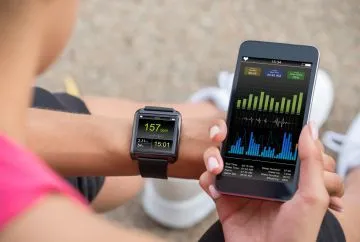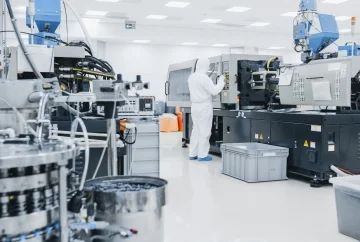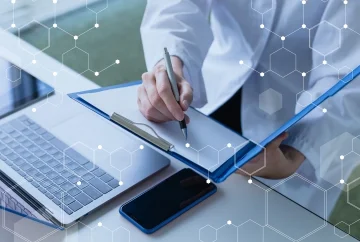Connected Medical Devices Market
The connected medical devices market is one of those emergent fields in medicine that has been steadily rising over the past decade. Given its reliance on IoT technology, a feature that places it close to the paradigms of Industry 4.0, it's no surprise that Deloitte expects close to 70% of all existing medical devices to be connected to the internet by 2025.
Furthermore, an aging global population and the overall dissatisfaction among medical device buyers due to the broken servicing methods only add credence to the thesis of a massive surge in connected medical devices. Since it allows for predictive maintenance and remote troubleshooting, the prospects are all the brighter.
How Do Connected Medical Devices Work?
An intelligent combination of cutting-edge hardware and innovative software is the key to ensuring the successful functioning of a connected medical device. A typical workflow would follow a patient providing inputs of their ailments, thereby prompting the device to run a search for a close match. If a match is found, it will provide a prescription to the patient. If it's unable to do so, it might ask the user to provide a sample of a certain metric and then repeat the matching process. When both of these steps fail, it directs the patient to book a consultation with a licensed medical practitioner who will examine the patient.
Key Technology Opportunities in Connected Medical Devices
In the realm of connected medical devices, opportunities for integrating technology exist across the entire lifecycle of the device: from manufacturing and maintenance and down to usage. Consumer-facing healthcare has stubbornly resisted the wave of technologies that have been disrupting industries for nearly two decades now. This means that the area is ripe for disruption, and technologies such as Artificial Intelligence (AI) and Machine learning (ML) are key to unlocking newer possibilities of connected healthcare.

Early Diagnosis and Detection
We've all heard of the oft-touted maxim "Prevention is better than cure." However, when it comes to newer forms of diseases whose effects are not immediately apparent, how does one go about keeping tabs on them? With connecting devices, this is now a possibility.
mHealth
mHealth, short for mobile health, is the first step towards making better use of technology in the healthcare space. Global smartphone usage and internet penetration have been steadily on the rise. In India alone, we have close to half the population online. By rolling out integrated video conferencing apps embedded with patient-oriented data collection and relay systems, medical practitioners will be able to reach a wider segment of patients in desperate need of medical attention. In the future, mobile health ecosystems could play a crucial role in combating public health challenges in developing countries.
Preventive Care
Connected medical devices are bundled with sensors that collect data all the time. This enables practitioners to get their hands on massive volumes of data collected from many different patients. So much so that it could be used (anonymously) to generate deeper insights into how diseases play out in different scenarios. From that point onward, it's an easy transition into embedding said devices with information that allows it to look for symptoms that serve as precursors to specific conditions. This niche field, colloquially known as care analytics, could pave the way for an 'open healthcare' model that can be used to improve patient outcomes.
Wearables/Digital Pills
Medical device manufacturers have finally figured out how to make activity trackers and vital monitoring systems portable, and the response from the market has been impressive. Fitness tracking has spawned an entire suite of applications and movements (like the quantified self), and the very same technology is also being piloted in the form of digital pills. Digital pills come with indigestible sensors that activate upon turning wet (in an intestinal environment) and are used to monitor medication adherence and provide physiological patient data. Both wearable devices and digital pills are nearing the commodification process, a sign that points to a bright future for connected medical devices in the healthcare industry.
Neural Networks and Drug Discovery
As artificial neural networks mature to the point of detecting patterns and solving basic problems at scale, the MedTech industry is now in a position to incorporate the computational prowess of neural networks into its operational paradigms to allow for a wider range of applications. The medical fraternity has been struggling with providing medical care at scale as healthcare institutions worldwide have been bombarded with patients, a phenomenon that has only been exacerbated in the last two decades. In this regard, drug discovery, which is usually a first step in formulating a response to any public health emergency, could immensely benefit from the capabilities of neural networks and slash development times to months instead of years.
Point-of-Care Diagnostics
Point-of-care diagnostics (POCD) have long been discussed as a much-needed solution in the healthcare world, but it wasn't until the COVID-19 pandemic that people began taking it seriously. POCD refers to the ability to conduct diagnostic procedures at or close to the patient's location, as opposed to requiring the patient to visit branches of labs that specialize in diagnostics. With connected medical devices, diagnostic labs can completely abandon plans of expanding physically and focus solely on distributing 'smart test kits' that would shorten processing times and enable labs to save on expansionary/operational expenditure.
Embedded Computer Vision & Diagnostics
Imaging systems are key to the functioning of any hospital and are the only reliable, non-invasive way for doctors to examine what goes inside a patient's body. This required the usage of large, expensive machines and on-premise PACS systems that made the entire affair expensive and difficult to scale. Fortunately, that is no longer a constraint.
Computer vision technology has come a long way over the past decade, and embedding computer vision capabilities into existing medical contraptions will endow doctors with enhanced imaging capacities that cost less and are more mobile.
Personalized Care
Personalized medical attention was all but impossible to be delivered at scale. It requires round-the-clock care and special attention from multiple practitioners to be directed towards a patient over a long period. Connected medical devices are all set to change this by leveraging connectivity and embedding it into existing technology.





